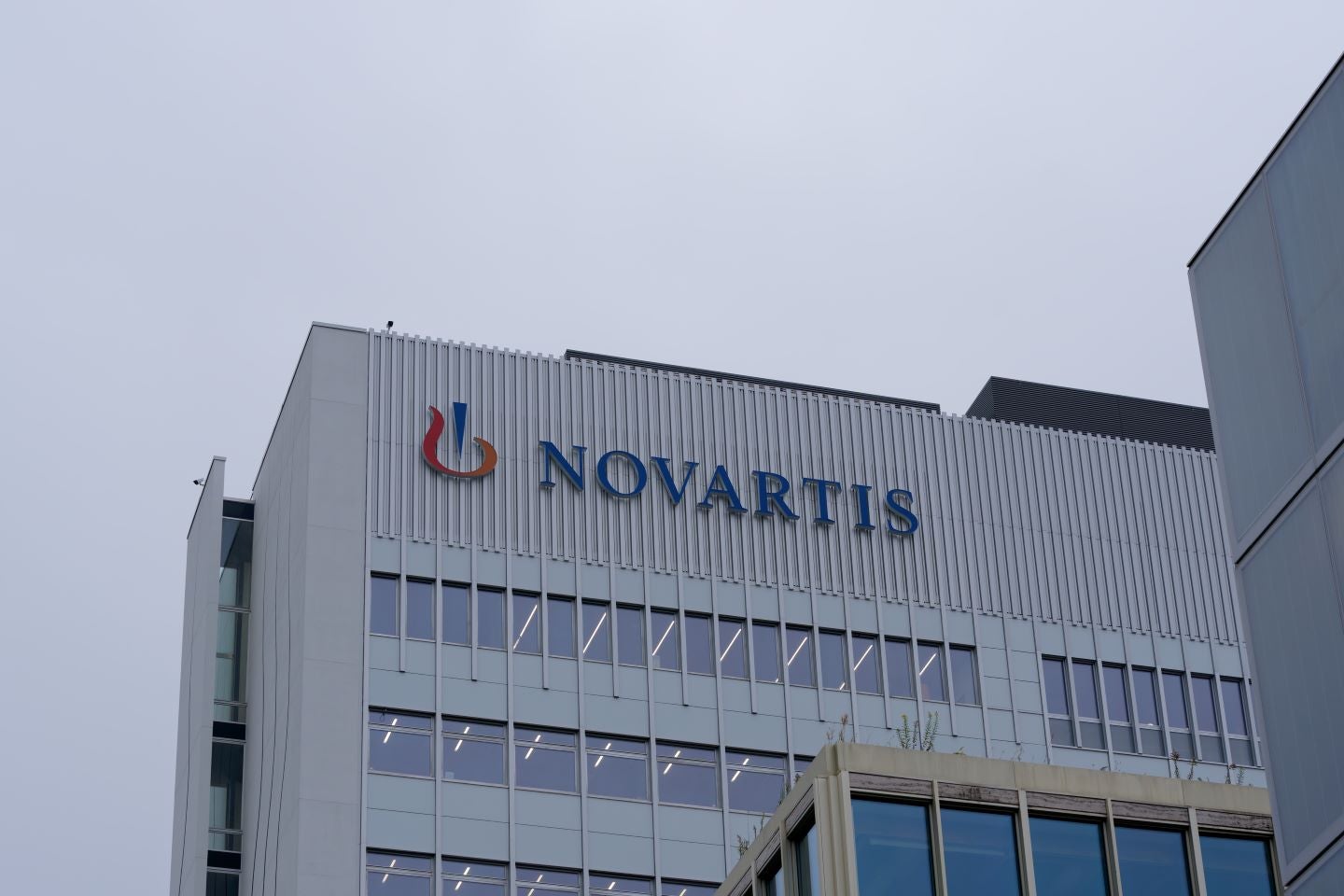At the European Society for Medical Oncology (ESMO) Congress on 20-24 October, updated interim results were presented from the Phase III PSMAfore trial evaluating Pluvicto (lutetium vipivotide tetraxetan) for the treatment of metastatic castration-resistant prostate cancer (mCRPC) in prostate-specific membrane antigen (PSMA)-positive patients who had not received prior taxane-based chemotherapy. Pluvicto, accompanied by Kisqali (ribociclib), was the focus of Novartis’s marketing effort at the congress this year, highlighting its determination to push its radiopharmaceutical portfolio forward. Pluvicto met its primary endpoint in radiographic progression-free survival (rPFS) with an updated hazard ratio of 0.43, and demonstrated improved safety and durability over its androgen receptor pathway inhibitor (ARPI) comparators, Janssen’s Zytiga (abiraterone) and Astellas’s Xtandi (enzalutamide). However, scepticism was focused on PSMAfore’s immature overall survival (OS) data with a negative trend and its weak control arm, shaking confidence in the radioligand despite its positive first interim result. First approved in 2022 in the post-ARPI and chemotherapy setting, Pluvicto has yet to provide convincing data in this presentation for the agent to become a widely anticipated, practice-changing first-line therapy for mCRPC patients. Novartis remains optimistic with a planned FDA filing for the pre-taxane setting to occur in 2024.
In efficacy, Pluvicto demonstrated an rPFS of 12.02 months (versus 5.59 months), with an encouraging objective response rate (ORR) at 50.7% (versus 14.9%). Its complete response rate (21.2% versus 2.7%) was almost tenfold that in the comparator arm. At the time of the second interim analysis, Pluvicto however failed to provide an improvement in median OS (19.25 months versus 19.55 months with a hazard ratio of 0.80) over the standard-of-care, first-line ARPI therapies after adjusting for the 84.2% crossover. Meanwhile, the radioligand showed a 16% increase in risk of death in the intent-to-treat analysis, despite only 57.2% of events occurring in both active and control arms. The collection of OS data will continue as indicated by the investigator. Pluvicto still has its merits: more lasting durability was demonstrated, with the median duration of response at 13.63 months (versus 10.05 months). Patients who received Pluvicto also saw a lengthened quality of life and delayed pain worsening.
Pluvicto’s safety performance may serve as a differentiation to the widely adopted ARPIs. Although the overall occurrence of adverse events (AEs) in the two arms was similar (98.2% versus 96.1%), fewer grade 3 to 5 AEs (35.7% versus 45.3%) took place in patients who received Pluvicto. Fewer patients in the Pluvicto arm (3.5% versus 15.1%) would require dose adjustment; still, percentages of patients who discontinued treatment due to AEs were close (5.7% versus 5.2%) in the two arms. The top three most frequent AEs of any grade were dry mouth (57.3%), asthenia (31.7%), and nausea (31.1%), whereas most ARPI-treated patients experienced asthenia (28.9%), fatigue (25.4%), and joint stiffness (20.7%)
Beyond its unsatisfactory OS performance, various questions were raised on the PSMAfore trial. The control was considered to be a weak comparison, where patients would receive an ARPI monotherapy, Zytiga or Xtandi, and switch to a second one after the first one failed. The practice was not reflective of the real-world practice as patients may see little improvement from a sequential hormone therapy. The trial also could not inform physicians if Pluvicto is superior to competing PARP inhibitors in the pre-taxane chemotherapy setting, such as Janssen’s dual-action Akeega (niraparib with abiraterone) and AstraZeneca’s Lynparza (olaparib) in combination with Zytiga. Giving taxane chemotherapy after the first ARPI would serve as a more convincing comparator for Pluvicto’s new positioning.
Limited patient diversity in the trial is another issue with the trial. Out of the 234 enrolled in each arm, there were only in total 12 Black and three Asian patients in both arms, leading to an inadequate prespecified subgroup analysis for these races. In the meantime, the trial did not enrol patients with poor performance status (PS), whereas only patients with 0 to 1 Eastern Cooperative Oncology Group (ECOG) PS were included in the eligibility criteria; therefore, Pluvicto could not showcase its safety and efficacy in patients with worse overall health status in the early setting. These limitations from the PSMAfore trial add to the currently unconvincing answer to Pluvicto’s role before chemotherapy, positioning the radioligand as just an extra, potential therapeutic option for mCRPC patients.
See Also:
The challenge in Pluvicto’s label expansion is only a hiccup for Novartis’s expansion in its oncology radiopharmaceutical portfolio. Since the 2017 acquisition of Advanced Accelerator Applications, the Swiss pharma has been building on the technological success of Lutathera (lutetium dotatate), which shares the same radioactive, beta radiation-emitting payload, Lutetium-177, as Pluvicto. In Phase I development, AAA603 and AAA817 are two of Novartis’s early candidates that leverage the same molecular target and payload as Lutathera and Pluvicto. The flexibility of mix-and-matching the binder and radioactive payload provides the same level of versatility as antibody-drug conjugate (ADC) platforms without the need for a cleavable linker, while avoiding the usual drug resistance mechanism encountered by ADCs.
How well do you really know your competitors?
Access the most comprehensive Company Profiles on the market, powered by GlobalData. Save hours of research. Gain competitive edge.

Thank you!
Your download email will arrive shortly
Not ready to buy yet? Download a free sample
We are confident about the unique quality of our Company Profiles. However, we want you to make the most beneficial decision for your business, so we offer a free sample that you can download by submitting the below form
By GlobalDataDue to its versatility, an increasing number of followers in radiopharmaceuticals is expected in the coming years. According to GlobalData’s Pharma Intelligence Center, there are nine Phase III radiopharmaceutical candidates worldwide, six of which are adopting the Lutetium-177 payload. In addition, all except one candidate are gearing towards the indications of mCRPC and neuroendocrine gastroenteropancreatic tumours (GEP-NET), where Lutathera and Pluvicto found their initial successes. In the leading part of the radioligand race, Actinium Pharmaceuticals is the odd one out with its unique therapeutic focus on acute myeloid leukaemia. Its leading candidates, Iomab-B and Actimab-A, leverage anti-CD45 and CD33 antibodies to target immature blasts with different payloads, iodine-131 and actinium-225, respectively. Similar to ADCs, drug developers have been pursuing more payloads for maximizing their radioligands’ potency. Actimab-A is likely to be a first-mover as a radioligand in the blood cancer space to carry the more powerful, alpha radiation-emitting actinium-225 payload. A potential first-mover in the solid tumour space would be RayzeBio’s RYZ101 with the same radioisotope attached, despite sharing the same binder and same target market of GEP-NETs as Lutathera.
Could radiopharmaceuticals disrupt the ADC modality? A number of challenges exist including manufacturing bottlenecks for radioisotopes, behavioural restrictions for patients as they need to avoid close contact with others after administrations, and the lack of readiness for clinics to give radiotherapies. For smaller pharmaceutical companies, extensive effort in infrastructure investment and stakeholder engagement would be essential for the modality to overcome the initial entry barriers.








Related Company Profiles
Novartis AG
AstraZeneca Plc
Actinium Pharmaceuticals Inc